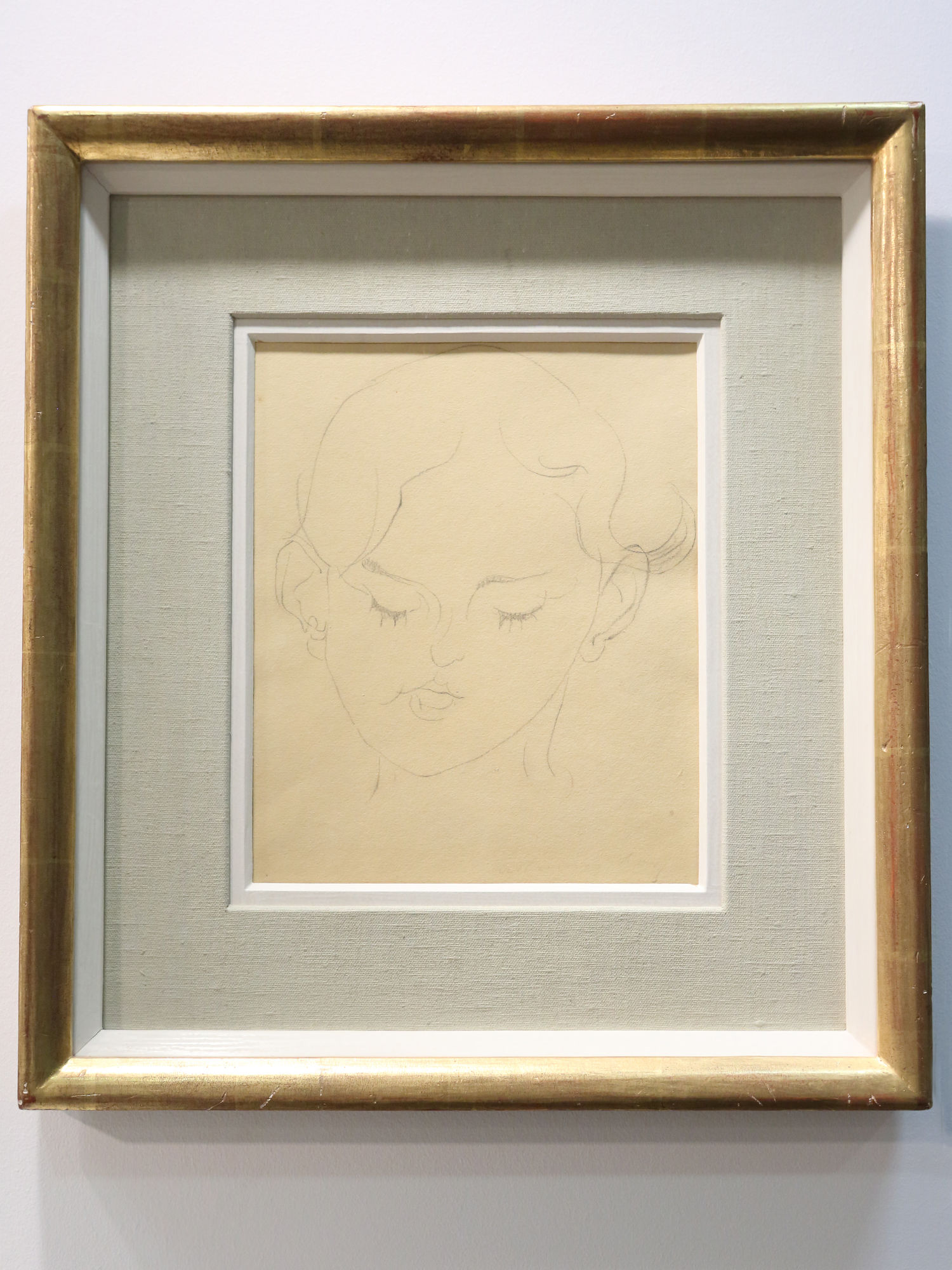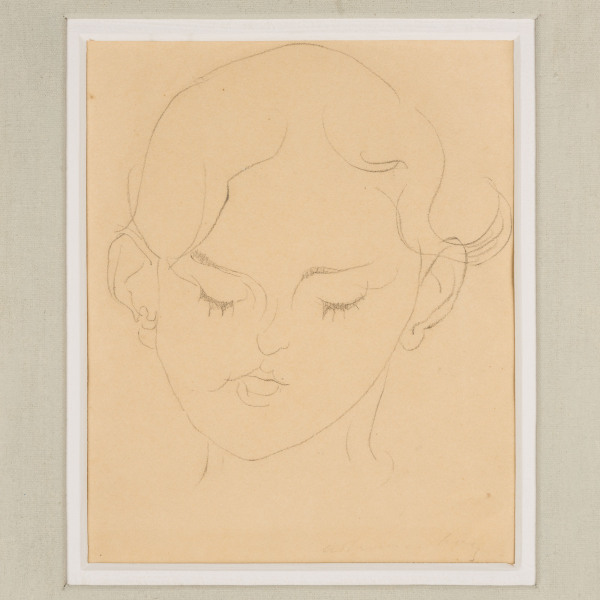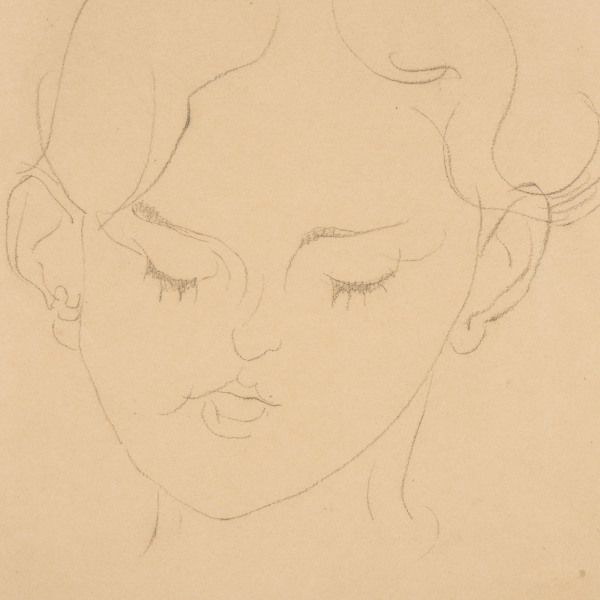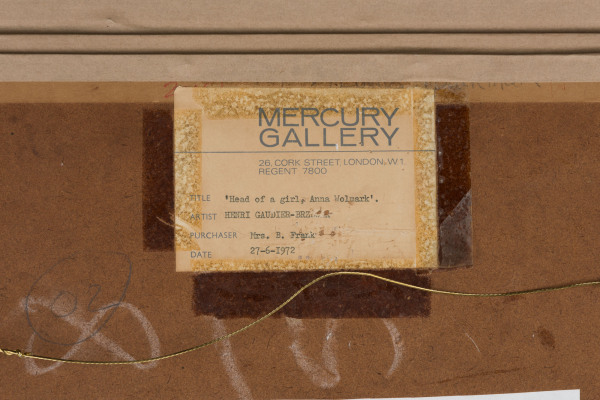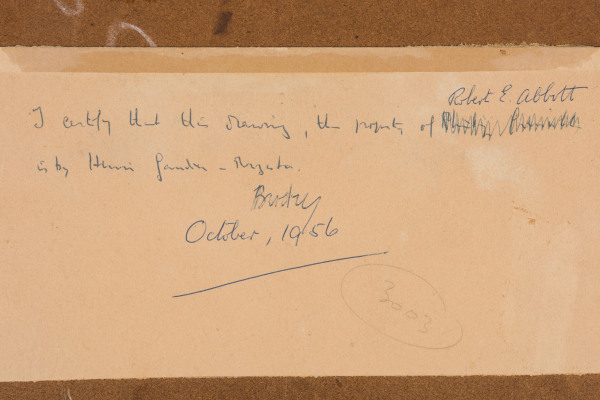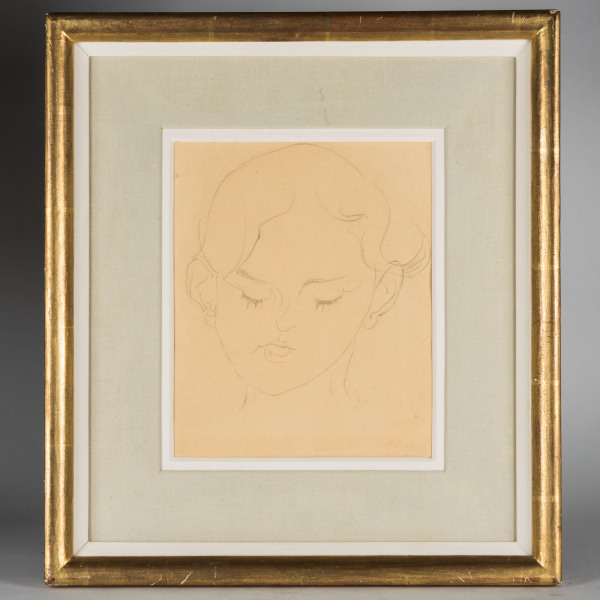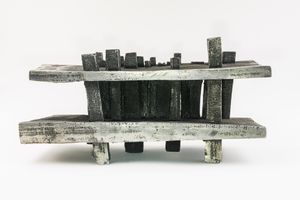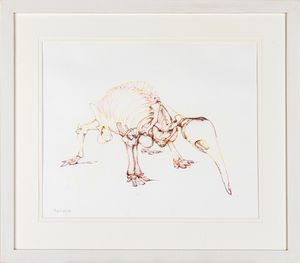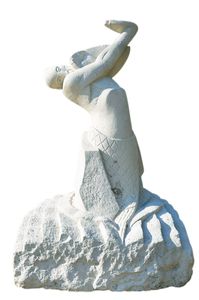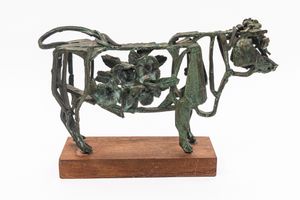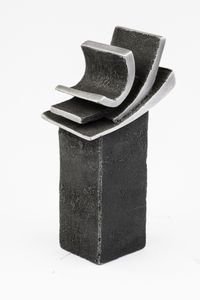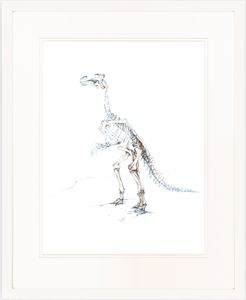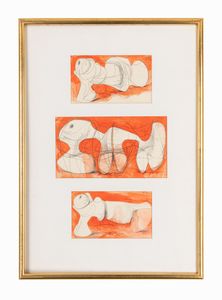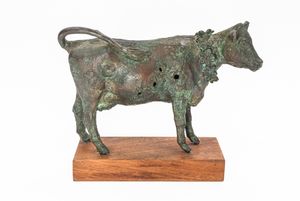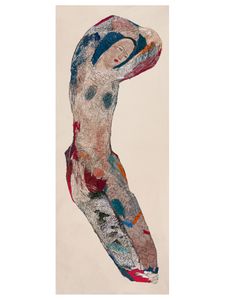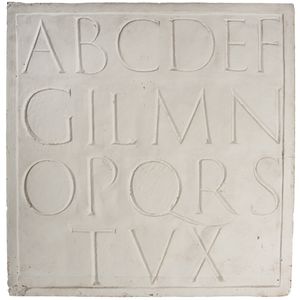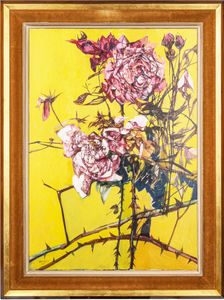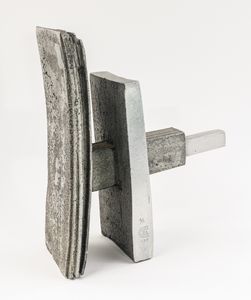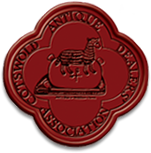'Head of a Girl, Anna Wolmark' Henri Gaudier-Brzeska 1891–1915
'Head of a Girl, Anna Wolmark' Henri Gaudier-Brzeska 1891–1915
1912
Stock Number: 12360/GSO
Height
29.10cm
[11.46 inches]
Width 22.70cm [8.94 inches]
Width 22.70cm [8.94 inches]
Sold
Pencil on Paper
Inscribed on Verso
Brzeska 1912
Anna Wolmark
Provenance
By Family Decent – Prof A A Wolmark
Robert E Abbott 1956
Mercury Gallery
Mrs B Frank 1972
Authenticated as on reverse by Horace Brodzky Oct 1956
Henri Gaudier-Brzeska 1891 – 1915
Born Henri Gaudier near Orléans in France – Henri
moved to London in 1911 with Zofia Brzeska (surname
joined thereafter though they were never married),
she a Polish writer twice his age, he, an artist with no
formal training │ Gaudier Brzeska’s oeuvre is one of
earthy direct carving (tool marks and all) that combined
his interest in non-European ethnographical works with
Cubist fragmentation that defined Vortasism (a group he
was strongly associated with). His sculpture (I exclude
the animals) is also often described as having a sense
of sexual symbolism indeed this ‘Savage Messiah’, an
epitaph given by Kettle’s Yard’s Jim Ede and the title of a
Ken Russell film about Brzeska’s life (that I need to seek
out) was produced with such ‘dynamism’ that he laid a
large foundation stone for Modern British Sculpture in
the 20th century, unquestionably influencing the likes of
Henry Moore and Barbara Hepworth. │ The drawing
here is of Anna Wolmark – possibly the artist and good
friend Alfred Wolmark’s sister (my research could not
discern the relationship). She is here portrayed with
a striking economy of line, the demure flightiness of a
young woman, her face downcast with those wonderful
eyelashes frozen forever in time. The Mercury Gallery
label – Gillian Raffles exhibiting his work many times
over her directorship – shows Gaudier Brzeska being
influenced by Chinese calligraphy, an interest peaked and
encouraged by the Poet Ezra Pound, he in turn being
the subject of Brzeska’s most famous sculptural portrait
(half a ton of Pantelic marble). Another label verso
relates to a friend and overlooked artist Horace Brobzky
(authenticator of the work), who had strong feelings that
the Pound bust was a phallus, though Epstein (a strong
influence on his work) seemed happier with describing
it as ‘virile’.
Inscribed on Verso
Brzeska 1912
Anna Wolmark
Provenance
By Family Decent – Prof A A Wolmark
Robert E Abbott 1956
Mercury Gallery
Mrs B Frank 1972
Authenticated as on reverse by Horace Brodzky Oct 1956
Henri Gaudier-Brzeska 1891 – 1915
Born Henri Gaudier near Orléans in France – Henri
moved to London in 1911 with Zofia Brzeska (surname
joined thereafter though they were never married),
she a Polish writer twice his age, he, an artist with no
formal training │ Gaudier Brzeska’s oeuvre is one of
earthy direct carving (tool marks and all) that combined
his interest in non-European ethnographical works with
Cubist fragmentation that defined Vortasism (a group he
was strongly associated with). His sculpture (I exclude
the animals) is also often described as having a sense
of sexual symbolism indeed this ‘Savage Messiah’, an
epitaph given by Kettle’s Yard’s Jim Ede and the title of a
Ken Russell film about Brzeska’s life (that I need to seek
out) was produced with such ‘dynamism’ that he laid a
large foundation stone for Modern British Sculpture in
the 20th century, unquestionably influencing the likes of
Henry Moore and Barbara Hepworth. │ The drawing
here is of Anna Wolmark – possibly the artist and good
friend Alfred Wolmark’s sister (my research could not
discern the relationship). She is here portrayed with
a striking economy of line, the demure flightiness of a
young woman, her face downcast with those wonderful
eyelashes frozen forever in time. The Mercury Gallery
label – Gillian Raffles exhibiting his work many times
over her directorship – shows Gaudier Brzeska being
influenced by Chinese calligraphy, an interest peaked and
encouraged by the Poet Ezra Pound, he in turn being
the subject of Brzeska’s most famous sculptural portrait
(half a ton of Pantelic marble). Another label verso
relates to a friend and overlooked artist Horace Brobzky
(authenticator of the work), who had strong feelings that
the Pound bust was a phallus, though Epstein (a strong
influence on his work) seemed happier with describing
it as ‘virile’.





